Occupational Safety Training for Cashew Nut Manufacturing
99,000 ₫
Note: The above price is calculated for one person, the price may fluctuate depending on the number of trainees participating in the course and the market movement. For more accurate price support, please refer to the price list or contact our consulting staff directly.
Occupational safety is an important issue in factory manufacturing cashew nuts and needs to be addressed promptly to ensure the health and safety of workers, enhancing the reputation of businesses. The Occupational Safety Training course is one of the effective solutions to raise awareness of how to prevent occupational accidents for workers participating in cashew nut manufacturing.
Table of Contents
Toggle1. Overview of Cashew Nuts
a. What are cashew nuts?
Cashew nuts are the seeds of the cashew tree (scientific name: Anacardium occidentale), a tree belonging to the Sumac family (Anacardiaceae) and native to tropical regions of the Americas. Cashew nuts are widely used in cuisine; they have a delicious, creamy flavor and a crunchy texture. Cashew nuts also contain many nutrients such as protein, fats, fiber, vitamins, and minerals like magnesium, phosphorus, and copper. In addition, cashew nuts have medicinal uses, such as pain relief, lowering cholesterol, and supporting the immune system.
Vietnam is one of the largest cashew nut producing and exporting countries in the world, along with countries such as India, Brazil, Nigeria, and Tanzania. According to data from the General Department of Vietnam Customs, in 2020, Vietnam exported over 522,000 tons of cashew nuts, reaching a value of 3.6 billion USD, an increase of 10.9% in volume and 0.9% in value compared to 2019. However, the cashew nut manufacturing industry in Vietnam still faces many challenges. Some major issues include:
- Weather conditions: Vietnam’s hot and humid climate is very suitable for growing cashew trees, but it also creates difficulties for the manufacturing process, especially during harvesting and processing stages.
- Competition: The cashew nut manufacturing industry faces fierce competition from other countries such as India, Brazil, Nigeria, and Tanzania, particularly in terms of pricing.
- Product quality: Some Vietnamese cashew nut products have not yet reached high quality standards, making it difficult to meet market demands.
- Processing technology: Currently, many cashew nut factories in Vietnam still use outdated processing technology, which does not meet the demand for large-scale manufacturing that requires efficiency and convenience.
However, government incentive policies supporting the cashew nut manufacturing industry, combined with investment and technological improvements, have helped the sector develop and contribute significantly to Vietnam’s economy.

b. Types of cashew nut processing machines
There are many types of cashew nut processing machines to make the manufacturing process faster and more efficient. Below are some common cashew nut processing machines:
- Cashew roasting machine: This machine is used to roast cashew nuts. It heats the nuts using high temperatures, helping to melt the fat on the nuts and create the characteristic flavor of roasted cashews.
- Cashew shelling machine: This machine removes the hard shell covering the cashew nuts. Cashew shelling machines usually use a rotating mechanism to separate the shell from the nut.
- Cashew grinding machine: This machine is used to grind cashew nuts into powder or cashew cream. It usually uses cutting blades to crush the nuts and produce a smooth-textured final product.
- Cashew oil press machine: This machine is used to extract oil from cashew nuts. It uses a compression mechanism to separate the oil from the nuts, producing pure cashew oil.
- Cashew drying machine: This machine removes moisture and reduces the water content of cashew nuts after roasting. It uses high heat to remove moisture, helping the final product have lower humidity and longer shelf life.

c. Prominent cashew nut manufacturing companies
Vietnam is one of the largest cashew nut producing countries in the world, with many prominent cashew nut manufacturing companies. Notable cashew nut companies in Vietnam include:
- Le Family Group: A company headquartered in Binh Phuoc province, one of the largest cashew nut manufacturers in Vietnam.
- Viet My: A company headquartered in Binh Phuoc province, specializing in salted roasted cashews and spicy roasted cashews.
- Quang Minh: A company headquartered in Binh Phuoc province, specializing in salted roasted cashews, spicy roasted cashews, and other cashew products.
- An Phu Investment and Trading Joint Stock Company: Headquartered in Ho Chi Minh City, specializing in the manufacturing and trading of salted roasted cashews, spicy roasted cashews, and other cashew products.
- Lam Vien Foods: Headquartered in Lam Dong province, specializing in cashew-based products such as confectionery, jams, and juices.
There are also many other companies manufacturing cashew nuts in Vietnam; however, the above companies are prominent and reputable representatives in the market.
d. Specific jobs in a cashew nut manufacturing factory
Group 1
- Chief Executive Officer, Deputy CEO, and department heads in a cashew nut manufacturing factory.
Group 2
- Safety officers: manage safety in the factory, design safety procedures, supervise and ensure employees follow safe working processes.
Group 3
- Cashew harvesting: manual labor working in cashew gardens to harvest cashew fruits and separate the nuts from the fruits.
- Drying: after harvesting, cashew nuts are put into drying machines to reduce moisture content below 10%.
- Shelling: cashew nuts are put into shelling machines to remove the hard shell surrounding the nut.
- Re-drying: after shelling, cashew nuts are dried again to completely remove moisture and achieve the required dryness.
- Sorting and packaging: cashew nuts are sorted by size and shape, then packaged into different types of packaging for market consumption.
- Quality control: all cashew products are inspected to ensure they meet quality standards and food safety requirements.
Group 4
- Office, service, sales, and marketing jobs.
- Production management, quality management, human resource management, material management, financial and accounting management.
- Research and development of new products, product packaging design.

2. Overview of occupational safety training for cashew nut manufacturing
In this article, we focus on issues related to Group 3, because Group 3 directly participates in the manufacturing process and faces the highest occupational safety risks. For reference to other groups, see here
a. What is Group 3 occupational safety training?
- Group 3 occupational safety training consists of sessions that equip workers with awareness on preventing workplace accidents.
- The occupational safety training course helps workers identify and avoid hazards, reducing the risk of accidents while working.
REGISTER FOR OCCUPATIONAL SAFETY TRAINING SERVICE
b. Training duration
Initial safety training duration
- Total training time is at least 24 hours, including examination time.
- 8 hours of theory on the system of policies and laws on occupational safety and hygiene
- 8 hours of theory on basic knowledge of occupational safety and hygiene
- 4 hours of theory on specialized training content
- 2 hours of practice on specialized training content
- 2 hours of theoretical exam at the end of the course
The safety training center schedules multiple sessions depending on the workers’ availability. Usually, there are 6 sessions over 3 days, provided the manufacturing company can arrange continuous training time.
Periodic safety training duration
- Before the occupational safety card expires, workers must take periodic occupational safety training with a periodic training duration of at least 50% of the initial training duration.
Explanation: total periodic occupational safety training lasts at least 12 hours, including exam time. After completing the periodic course and passing the test, the worker will have their occupational safety card reissued or extended.
c. Training course content
| No. | TRAINING CONTENT | TRAINING DURATION (HOURS) | |||
| Total | Including | ||||
| Theory | Practice | Exam | |||
| I | System of policies and laws on occupational safety and hygiene | 8 | 8 | 0 | 0 |
| 1 | Overview of legal documents and regulations on occupational safety and hygiene. | 6 | 6 | ||
| 2 | System of standards and technical regulations on occupational safety and hygiene. | 1 | 1 | ||
| 3 | Specific regulations of state management agencies on occupational safety and hygiene when constructing, expanding, or renovating facilities for manufacturing, using, storing, and inspecting machines, equipment, materials, and substances with strict safety and hygiene requirements. | 1 | 1 | ||
| II | Basic knowledge of occupational safety and hygiene | 8 | 8 | 0 | 0 |
| 1 | Basic knowledge of hazardous and harmful factors in the workplace. | 4 | 4 | ||
| 2 | Methods to improve working conditions. | 1 | 1 | ||
| 3 | Safety culture in manufacturing and business. | 1 | 1 | ||
| 4 | Rights and obligations of employers and employees; policies on occupational safety and hygiene for workers; roles and responsibilities of safety networks and safety officers. | 1 | 1 | ||
| 5 | Rules on occupational safety and hygiene, signs, instructions, use of safety equipment and personal protective equipment; skills for first aid in workplace accidents and occupational disease prevention. | 1 | 1 | ||
| III | Specialized training content | 6 | 4 | 2 | 0 |
| Comprehensive knowledge of machines, equipment, substances generating hazardous and harmful factors; analysis, assessment, risk management in occupational safety and hygiene; safe work procedures with machines, equipment, and substances with strict safety requirements. | 6 | 4 | 2 | ||
| IV | Final exam on occupational safety training content | 2 | 2 | 0 | 0 |
| Total | 24 | 22 | 2 | ||
See also training content of 6 groups
d. Occupational safety card
After completing the occupational safety training course and passing the test, workers will be issued an occupational safety card (commonly called occupational safety certificate Group 3).
The Group 3 card displays details such as name, date of birth, job and work environment, training duration, red stamp, and signature confirming completion of the training course.
According to regulations on issuing safety cards specified in Clause 2 of Article 24, Decree 44/2016/ND-CP, there are two cases:
- If there is a labor contract between the employer and the employee, the employer must sign, stamp, and endorse the safety card for the Group 3 employee after completing the training and passing the exam from an occupational safety training unit.
- If the worker is freelance or seasonal, without a labor contract, the training unit must sign, stamp, and endorse the safety card after the worker completes the course and passes the exam.

3. Identifying Hazards in Cashew Manufacturing
During cashew manufacturing, there are many hazards that can occur and affect the quality and food safety of the product. These hazards include:
- Cashews are products that are easily contaminated by microorganisms if not stored, transported, and preserved properly.
- Failure to ensure food safety and hygiene during production, processing, and packaging can lead to contamination risks affecting human health.
- Cashews are flammable, so handling them requires safety measures such as using explosion-proof equipment and applying anti-static measures.
- Cashew processing activities such as cutting, grinding, roasting, etc., produce smoke, dust, and toxic fumes. Working in such environments for a long time can cause health problems such as respiratory diseases, pneumonia, etc.
- Transportation, lifting, and loading of cashews involve heavy and fast-moving equipment; lack of safety measures can result in collision and falling hazards.
- Cashew processing machinery can also cause occupational accidents if not operated properly or maintained periodically.
- If electrical equipment in the factory is not regularly maintained, properly insulated, and waterproofed, it can pose electric shock risks to workers during manufacturing.
4. Common Occupational Accidents in Cashew Manufacturing
Common occupational accidents in cashew manufacturing include:
- Physical accidents: These usually occur when using machinery during manufacturing, including cutting, pressing, grinding, packaging, and transporting. Employees may suffer cuts, burns, broken bones, injuries from collisions, stabs, or falls from height.
- Chemical poisoning: Employees in cashew factories may be poisoned if they do not wear adequate personal protective equipment or misuse chemicals during manufacturing.
- Electrical accidents: These often occur when using electrical equipment during manufacturing, including grinders, cutters, and other machines. Employees may suffer electric shocks if safety measures are not followed.
- Health hazards: Employees may be affected by factors such as humidity, temperature, pressure, noise, light, dust, and toxic fumes. These can cause health issues like pneumonia, asthma, rhinitis, hearing loss, and skin-related diseases.
5. Safety Measures for Participating in Cashew Manufacturing
To ensure safety when participating in cashew manufacturing, the following safety measures can be applied:
- Ensure full use of personal protective equipment such as goggles, masks, gloves, boots, dust and heat-resistant coats.
- Use machinery, tools, electrical equipment, chemicals, and materials according to regulations and manufacturer instructions.
- Inspect machinery, tools, and equipment before use and conduct regular maintenance to ensure safety.
- Do not use equipment, tools, machinery, or chemicals improperly or unsafely.
- Follow safety regulations and occupational safety procedures specified in the manufacturing process.
- Check and assess working conditions to ensure factors like temperature, humidity, pressure, noise, light, and dust do not harm health.
- Have emergency and accident response plans in place.
- Occupational safety training for employees on safety regulations, and procedures when working with machinery, tools, chemicals, and production materials.
- Ensure safety during the transportation and storage of cashew products.
- Organize regular inspections to evaluate the effectiveness of safety measures and improve them if necessary.
- Periodically conduct workplace environmental monitoring in the factory, collect and analyze harmful factors affecting employees, and adjust measures to reduce hazards to prevent occupational diseases.

6. Benefits of Occupational Safety Training in Cashew Manufacturing
An Toan Nam Viet provides enterprises with the following benefits after completing occupational safety training courses according to Decree 44/2016/ND-CP on occupational safety and hygiene:
- Employees can identify potential occupational hazards and take preventive measures to avoid accidents.
- Enterprises can establish risk prevention measures in production, operation, and maintenance processes.
- Reduce costs associated with occupational hazards.
- Uninterrupted production increases labor productivity and product quality.
- Ensure compliance with labor safety laws, reducing legal risks.
- Enhance credibility and professionalism, improving the enterprise’s brand.
Nam Viet’s training courses are solutions to prevent external factors that may endanger individuals, helping them avoid injuries or, in severe cases, death.
REGISTER FOR OCCUPATIONAL SAFETY TRAINING SERVICE
7. Customer Feedback After Completing Cashew Manufacturing Safety Training
An Toan Nam Viet has years of experience partnering with enterprises across Vietnam, especially in southern provinces. This responsibility is invaluable, which is why Nam Viet’s Occupational Safety Training has been continuously professionalized. Our growth is motivated by positive feedback and suggestions from enterprises. Below are testimonials from our partners.
Hoa Dat Construction and Trading Joint Stock Company
“Nam Viet’s service has greatly simplified occupational safety and completing safety documentation for our work. The consultants were enthusiastic and responsive to our questions. Five stars for Nam Viet.”
See more customer interviews after using services from An Toan Nam Viet
8. Occupational Safety Training Capacity of An Toan Nam Viet
An Toan Nam Viet is a reputable and high-quality center for occupational safety training in Vietnam today. Our training sessions are conducted continuously at factories, manufacturing workshops, or construction sites across the country (all 63 provinces in Vietnam).
REGISTER FOR OCCUPATIONAL SAFETY TRAINING SERVICE
Occupational Safety Training License
- An Toan Nam Viet has been certified by the Department of Safety under the Ministry of Labor, Invalids and Social Affairs, which issued a certificate confirming our eligibility to conduct occupational safety and hygiene training. This further strengthens our occupational safety training capabilities.

Training Materials and Lectures
- Before occupational safety training materials are applied in safety training courses, they are carefully reviewed and verified to ensure the lectures are accurate and effective when applied.
- Our instructors’ teaching methods are standardized according to An Toan Nam Viet guidelines, a method researched and developed by occupational safety experts to maximize knowledge absorption for trainees.
Facilities
- Controlling factors in the classroom that affect the training process increases teaching efficiency and trainees’ learning outcomes.
- Our training facilities always provide spacious classrooms meeting standards for area, lighting, and training equipment, etc.
9. Nationwide Reputable Occupational Safety Training Center
At An Toan Nam Viet, we prioritize professional dedication to occupational safety training. For us, imparting knowledge that helps workers protect themselves on their livelihoods contributes to building the country.
To ensure effective training, we meticulously prepare every detail, from tools, teaching equipment, lesson plans, materials, to audio and lighting.
Our occupational safety instructors are experts with many years of experience. They even have research projects on identifying hazards across industries and methods to prevent them.
Lectures are based on practical experience and delivered in an engaging, easy-to-understand way for workers. These factors help trainees feel comfortable and absorb knowledge efficiently. Naturally, the content strictly follows Decree 44/2016/ND-CP.
Through this, trainees learn many hazard prevention measures and self-protection methods, applying them appropriately in real work situations.
Our training center proudly provides professional and reputable occupational safety training services with the following advantages:
- Competitive training fees while ensuring quality.
- Flexible training schedules tailored to company production activities.
- Fast certification procedures compliant with legal regulations.
- Experienced instructors with long-term expertise.
- Classrooms are controlled to optimize teaching efficiency and knowledge absorption.
- Lectures are designed to fit occupational safety practices in enterprises.
- An Toan Nam Viet works diligently and professionally to provide accurate and fast support to clients.

10. Additional References for Cashew Manufacturing Safety Training
- Cashew Manufacturing Occupational Safety Materials
- Occupational Safety Training Materials
- Occupational Safety Training Test Sets
- Cashew Manufacturing Occupational Safety Quiz
- Cashew Manufacturing Occupational Safety Training Slides
1 review for Occupational Safety Training for Cashew Nut Manufacturing
No comments yet


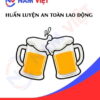
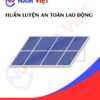



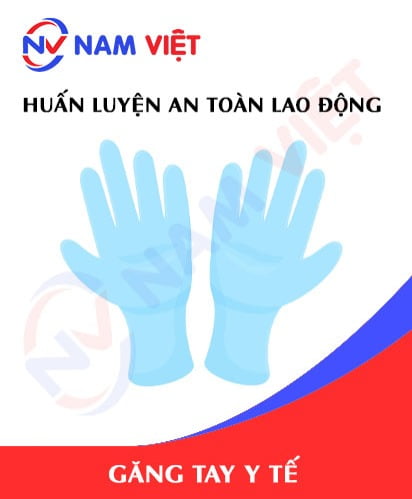
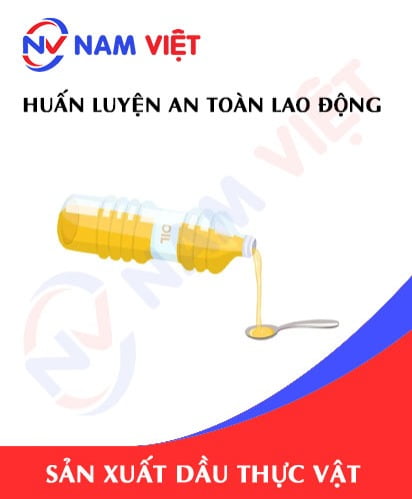


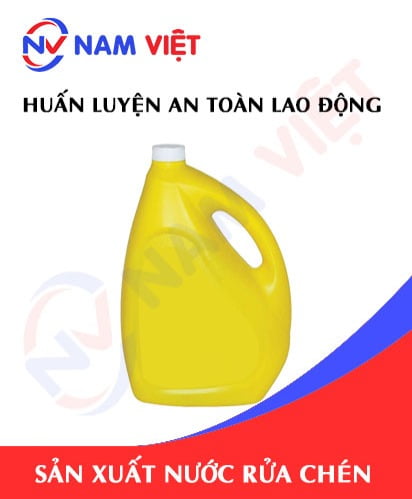



namchinh.haiphong341
Bài giảng rất sinh động!